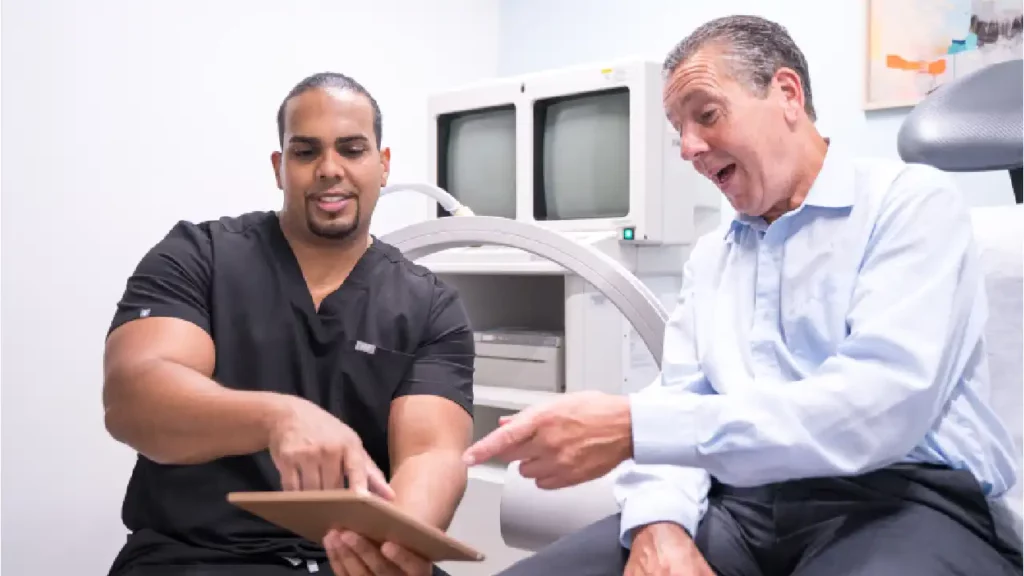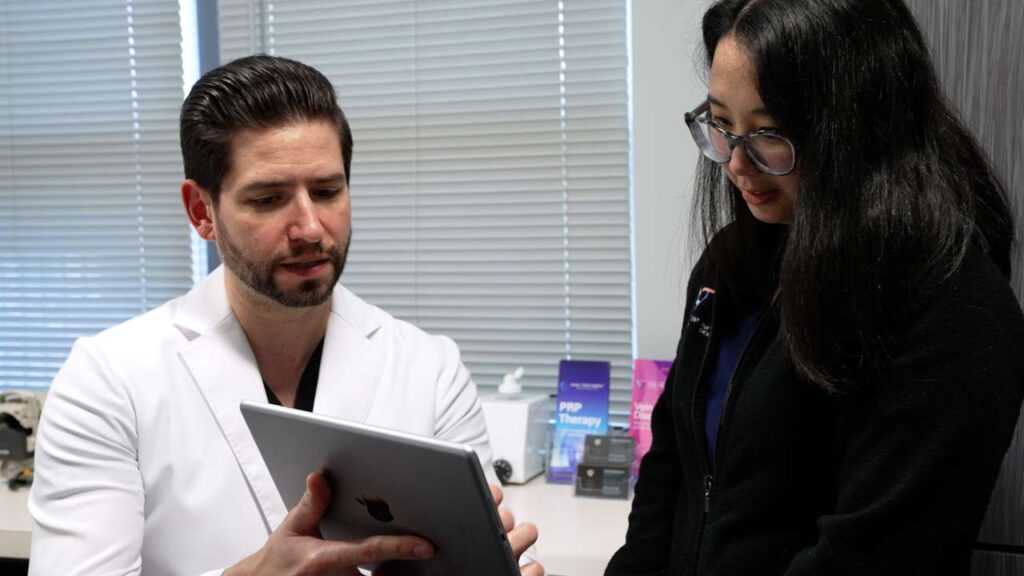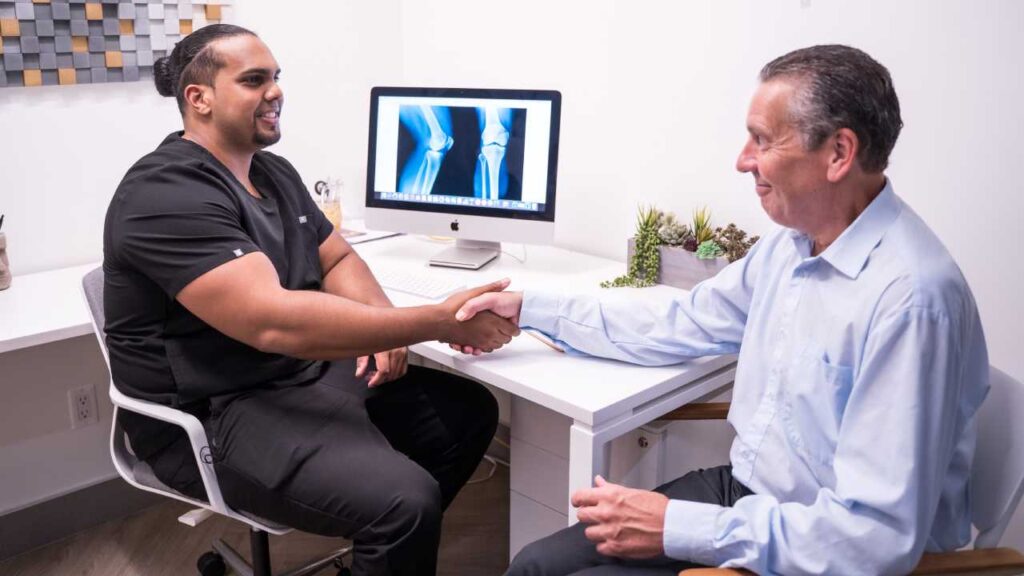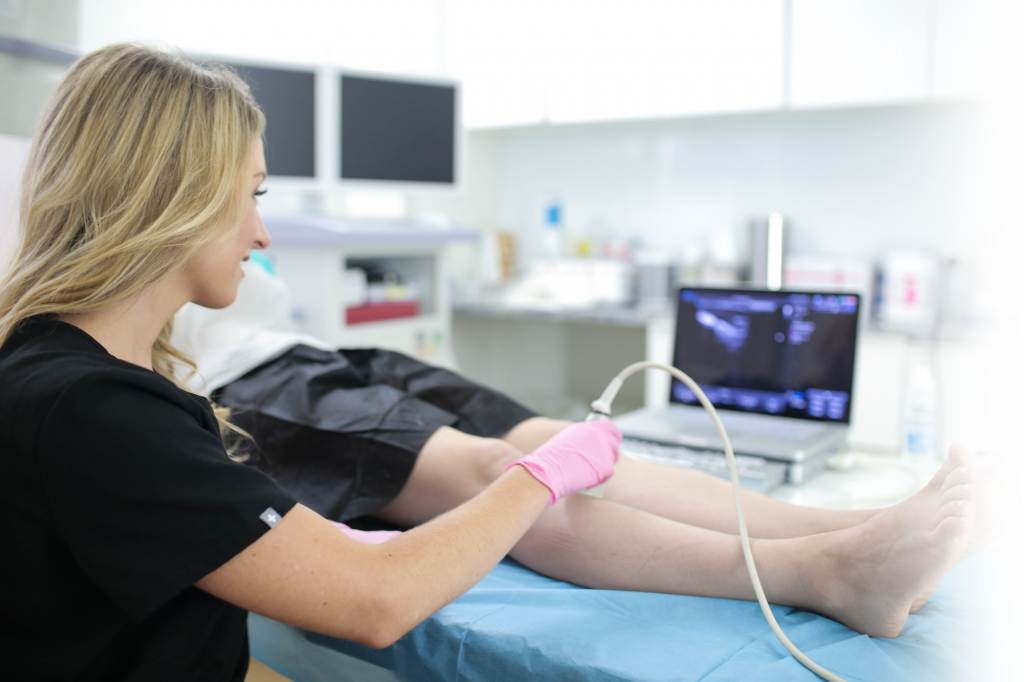What’s Wrong with the Vein Anatomy of Spider Veins?
Spider veins develop from excess pressure on the veins. This pressure can come from external sources, like sun damage or skin injuries. But it often comes from internal problems in vein anatomy. Pressure causes new, tiny veins to branch out like spider webs from the pressurized blood vessel. The main reason for this is valve failure inside a vein.
Valves close after blood passes through, to keep blood moving in a singular direction. If a valve fails, blood flows in reverse and accumulates, straining the vein walls. As the vein becomes engorged, blood vessels begin spreading out from that vein to contain excess blood. These little branches are spider veins. Book an appointment to eradicate these blood vessels and restore circulation, as well as your skin’s appearance.
Spider veins are dead ends in the circulatory process. They don’t lead back to the heart, which is where veins are supposed to pump blood. Treating them is quick and easy, and often alleviates symptoms you didn’t know were connected. Valve failure is part of a common issue called Chronic Venous Insufficiency. It can cause swelling, cramping, heaviness, fatigue, restlessness, pain, and itching in the legs. Treating veins in the leg can relieve these symptoms too.
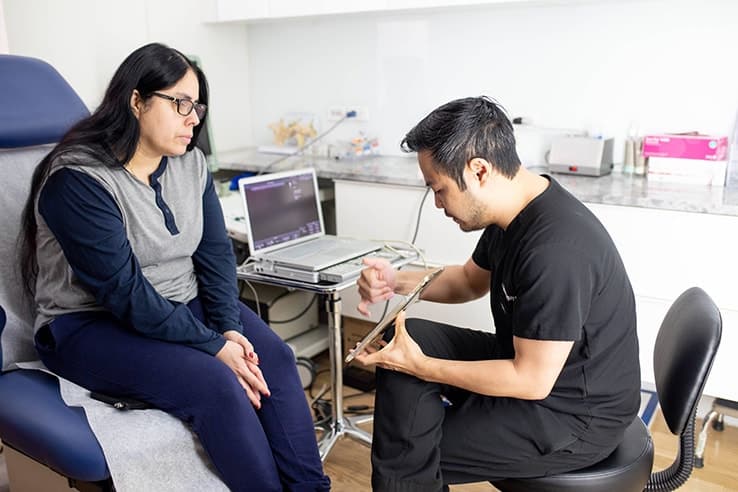
What Causes the Anatomy of Veins to Malfunction?
Spider veins aren’t entirely avoidable. They run in families, and they’re more common in women because hormones impact blood flow and vein dilation. But there are additional risk factors you can control. Here are things that cause spider veins, so you can address any risk factors you can change.
What Causes Spider Veins:
- Genetic predisposition
- Valve failure
- Chronic Venous Insufficiency
- Hormonal fluctuations
- Birth control pills
- Skin injury
- Sun damage
- Aging
- Pregnancy
- Menopause
- Lack of exercise
- Obesity
- Jobs where you sit or stand all day
Do Spider Veins or Dead Veins Need Collapsed Vein Treatment?
Some spider veins require treatment, particularly if they’re symptomatic or stem from Chronic Venous Insufficiency. Other spider veins aren’t dangerous, but they inhibit self-confidence. Treatment for these isn’t simply cosmetic. It often requires treating the underlying cause to prevent additional spider veins. If you choose a board certified vein doctor in New Jersey, they can help you acquire insurance coverage for spider vein treatment with ultrasound technology that proves when the issue is more than skin deep.
Can a Diagram of Veins in Legs Determine Treatment Necessity?
The best vein doctors use vein mapping technology to create a diagram of veins in the legs. This not only identifies broken valves and Chronic Venous Insufficiency, but it also helps doctors prove the medical necessity of treatment. Superficial leg veins are fed by deeper veins that may contain blood clots or weak valves. Vein diagrams also help doctors decide which treatment to use and where to inject it. Our vein specialists even use ultrasound guidance to administer certain treatments.
Varicose Veins vs Stretch Marks: Is Treatment Required?
Stretch marks, varicose veins, and spider veins affect the skin’s appearance. But stretch marks are less dangerous and often fade over time. Spider veins and varicose veins might not become problematic, but many of them do. They can produce the uncomfortable symptoms mentioned, like pain, restlessness, itching, and swelling. But they can also involve blood clots, deep vein thrombosis, profuse bleeding, venous ulcerations, venous stasis dermatitis, hyperpigmentation, and more. The earlier you treat spider veins and varicose veins, the better protected you’ll be against complications.
What Are the Best Treatments for Leg Vein Removal Near Me?
The best methods for leg vein removal in 2023 are non-surgical. Vein doctors now remove veins from circulation without removing them from the body. They do this by collapsing or closing the vein with tiny instruments that don’t require large incisions or surgical extraction. These treatments don’t use general anesthesia, and patients don’t need to be hospitalized or take time off work. These are methods our vein experts routinely use.
- Sclerotherapy
- Radiofrequency ablation
- Endovenous laser ablation
- Surface lasers
- Vein adhesives
- Mechanochemical ablation
What’s the Sclerotherapy Meaning in Understandable Words?
Sclerotherapy is widely regarded as the first spider vein treatment to consider. It’s gentle, quick, safe, and requires no local anesthesia. So, what does sclerotherapy mean? Sclerotherapy is the injection of a chemical solution that irritates vein walls. This causes the vein to close and no longer allow blood to pass through. Blood flows into adjacent veins instead, so that it returns to the heart rather than collecting in the vein.
Vein doctors perform sclerotherapy by cleaning your skin and inserting a hollow needle into the vein. They inject a sclerosant through the needle. It’s a painless procedure that feels, at most, like a brief pinch. Vein specialists use liquid or foam sclerosants, depending on the size and shape of the vein. Foam fills large veins more easily and travels through the vein differently. Your vein doctor will choose the best approach. For most small spider veins, a liquid sclerosant will suffice.
How Much Is a Varicose Vein Treatment or Spider Vein Removal?
The price of varicose vein treatment and spider vein treatment depends on three things: the severity of damage, the doctor who treats it, and your insurance coverage. The best way to receive affordable vein treatment is to choose a board certified, minimally invasive vein doctor at an accredited vein center.
Our vein doctors use non-surgical methods that eliminate the costs of general anesthesia, hospitalization, and lost wages during recovery. They are also trained in ultrasound technology that can prove treatment is necessary. What causes spider veins is often a determining factor in coverage approval. So, choose doctors with ultrasound training.
Our vein specialists use FDA-approved procedures that insurance companies cover. We file insurance paperwork on your behalf, so you know the cost prior to treatment. If your insurance requires you to wear compression stockings before treatment approval, we’ll fit you for the right size. Most of our patients acquire full coverage.
Which Leg and Pain Treatment Clinic Treats Spider Veins?
Our award-winning vein centers treat spider veins, varicose veins, and Chronic Venous Insufficiency onsite in just 15-30 minutes. You can even treat veins on your lunch break and go back to work! We always use the least invasive method possible, and we won’t recommend anything you don’t need. Visit us in Paramus, Clifton, Scotch Plains, Woodland Park, or Woodbridge for exceptional care.
Which Leg and Vein Clinic Near Me Has the Best Methods?
Our New Jersey vein centers were named Centers of Excellence for our unparalleled vein care. All of our doctors are board certified and trained in the latest vein treatments. We offer a wide range of procedures including sclerotherapy, radiofrequency ablation, endovenous laser ablation, vein adhesives, laser therapy, and mechanochemical ablation. Come see us and learn which one is right for you!
